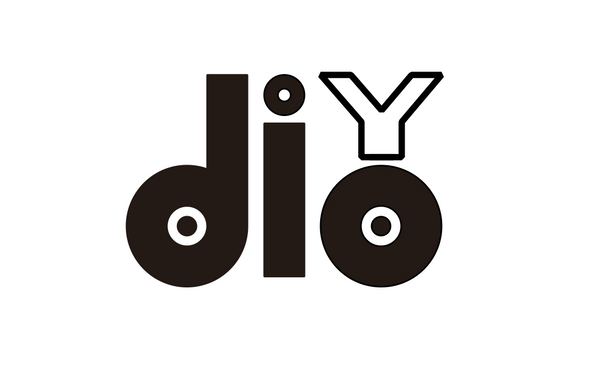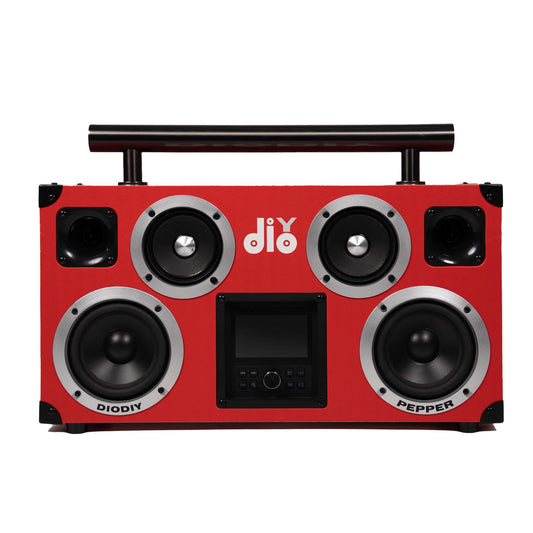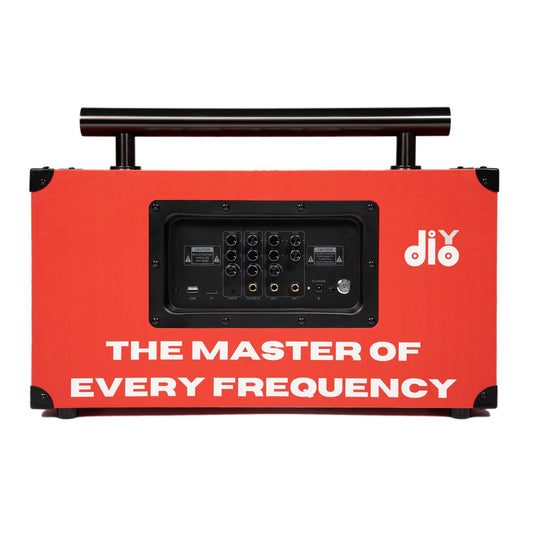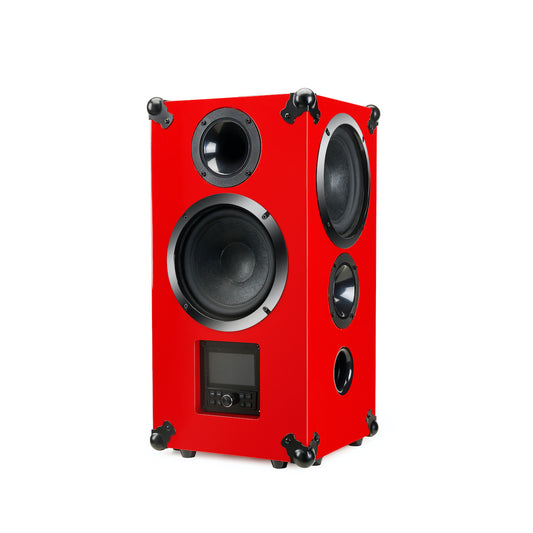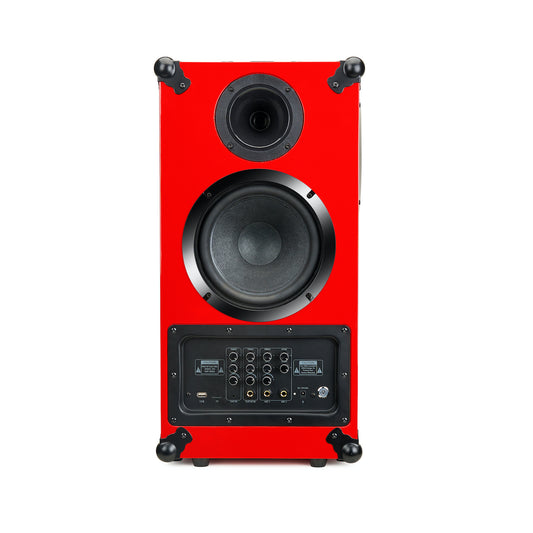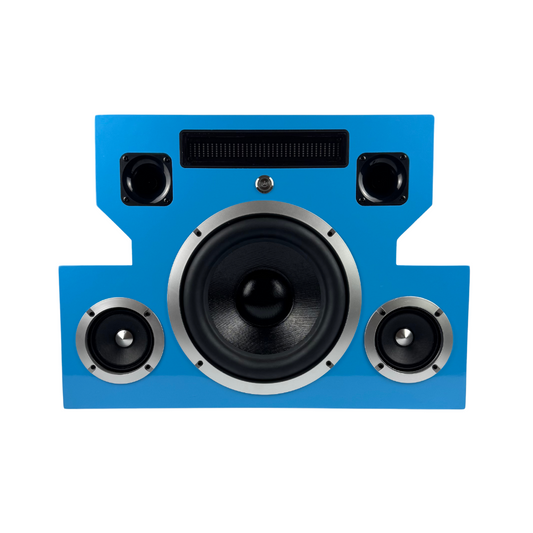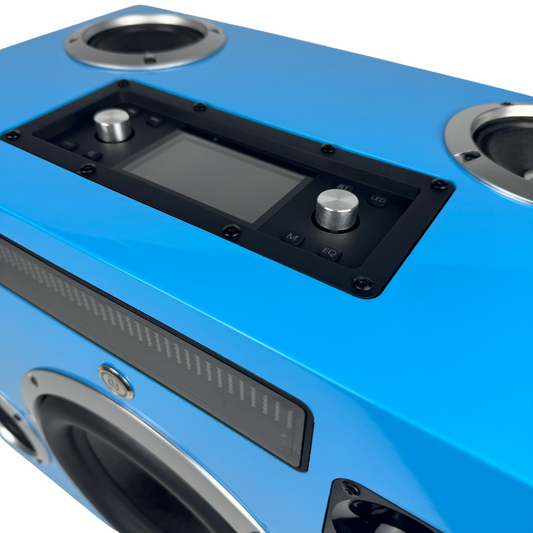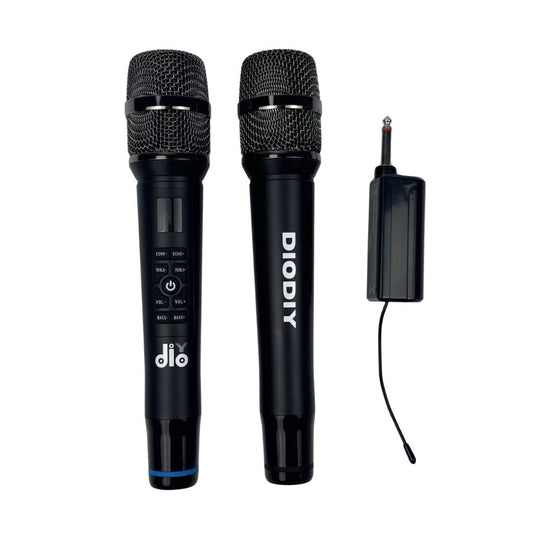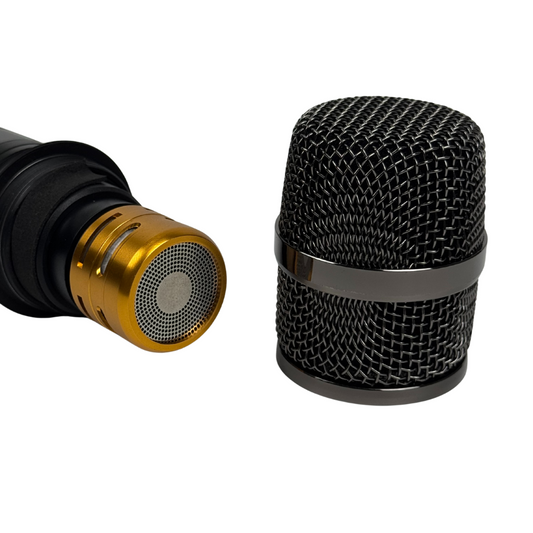
Omnidirectional Speakers vs. DioDIY's Heartbeat: A Comparative Analysis
Share
In the realm of audio technology, speaker design plays a pivotal role in shaping the listening experience. Among the various designs, omnidirectional speakers have garnered attention for their unique sound dispersion characteristics. However, at DioDIY, we've developed the Heartbeat model, which offers an alternative approach to sound distribution. This article delves into the workings of omnidirectional speakers, evaluates their performance, and compares them with our Heartbeat model.
Understanding Omnidirectional Speakers
Omnidirectional speakers are engineered to emit sound uniformly in all directions, creating a 360-degree sound field. This design aims to replicate the natural dispersion of sound, providing a consistent auditory experience regardless of the listener's position in the room.

Picture of a Omnidirectional Speaker From Google
How They Work
The core principle behind omnidirectional speakers involves radiating sound waves evenly across all axes. This is typically achieved by positioning drivers in such a way that they disperse sound both horizontally and vertically. The result is a sound field that envelops the listener, aiming to mimic the ambiance of a live performance.
Performance Considerations
While omnidirectional speakers offer a broad soundstage, their performance can be influenced by room acoustics. The uniform dispersion means that sound reflections from walls and other surfaces can affect clarity and imaging. In some cases, this may lead to a less defined stereo image compared to directional speakers.
Introducing DioDIY's Heartbeat Model
At DioDIY, we've taken a different approach with our Heartbeat model. Instead of relying on a single driver to disperse sound omnidirectionally, the Heartbeat features multiple loudspeakers strategically placed on each side of the unit. Specifically, it incorporates eight drivers—two on each side—configured to deliver a two-way sound system.

DioDIY's Speaker Model: Heartbeat
Advantages of the Heartbeat Design
-
Directional Clarity: By directing sound through multiple drivers, the Heartbeat ensures that audio reaches the listener more directly, enhancing clarity and reducing unwanted reflections.
-
Enhanced Stereo Imaging: The placement of drivers allows for precise stereo separation, providing a more immersive listening experience.
-
Controlled Dispersion: Unlike omnidirectional speakers, the Heartbeat's design minimizes the influence of room acoustics, resulting in consistent performance across various environments.
Comparative Analysis
While both omnidirectional speakers and the Heartbeat aim to deliver immersive sound, their methodologies differ. Omnidirectional speakers prioritize uniform sound dispersion, which can be advantageous in certain settings but may compromise clarity in acoustically challenging rooms. In contrast, the Heartbeat's multi-driver configuration offers targeted sound delivery, enhancing clarity and stereo imaging.
Conclusion
Choosing between omnidirectional speakers and the DioDIY Heartbeat depends on individual preferences and listening environments. For those seeking a broad, ambient sound field, omnidirectional speakers may be suitable. However, if clarity, stereo imaging, and adaptability to various room acoustics are priorities, the Heartbeat presents a compelling option.
As a leading speaker manufacturer, DioDIY is committed to delivering innovative audio solutions. Whether you're interested in traditional designs or exploring cutting-edge alternatives like the Heartbeat, our range of products caters to diverse audio needs.
